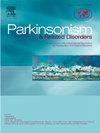阿波啡:帕金森氏症的过去、现在和未来。
IF 3.4
3区 医学
Q2 CLINICAL NEUROLOGY
引用次数: 0
摘要
2025年是阿波啡首次合成180周年,也是美国食品和药物管理局(FDA)首次批准用于晚期帕金森病的阿波啡皮下输注装置(SPN-830)的180周年。因此,这篇叙述性综述旨在研究阿波啡的临床历程,庆祝其动荡但却成立的过去,分析其目前在治疗帕金森病(PD)方面的挑战,并展望其在神经系统疾病和其他领域的美好未来。长期以来,人们一直认为,长期存在的误解和缺乏支持持续皮下阿帕吗啡输注(CSAI)治疗PD的一级证据,阻碍了其广泛应用。TOLEDO研究有力地证明了有临床意义的休息时间减少(基于数十年临床经验的预期),现在已经消除了这一障碍。未来需要解决的挑战包括:(1)重新定义阿波啡在PD治疗范例中的地位(从早期使用到临终护理),(2)减少获取差距(可获得性,成本),(3)改进给药系统和阿波啡配方,以及(4)扩大神经系统疾病内外的临床应用,在治疗非典型帕金森综合征和意识障碍方面已经取得了切实的成果,并在阿尔茨海默病方面前景看好。本文章由计算机程序翻译,如有差异,请以英文原文为准。
Apomorphine: past, present and future in Parkinson's disease and beyond
The year 2025 marks the 180th anniversary of the first documented synthesis of apomorphine, and the first U.S. Food and Drug Administration (FDA) approval of a subcutaneous apomorphine infusion device for advanced Parkinson's disease (SPN-830). This narrative review therefore aims to examine apomorphine clinical journey, celebrating its turbulent yet founding past, analyzing its current challenges in the treatment of Parkinson's disease (PD) and envisioning its promising future, both in neurological disorders and beyond. Enduring misconceptions and the lack of class 1 evidence for supporting the use of continuous subcutaneous apomorphine infusion (CSAI) in PD have long been thought to have prevented its generalized use. The TOLEDO study, which robustly demonstrated a clinically meaningful reduction in off time (as expected based on decades of clinical experience) has now removed this barrier. Challenges to be addressed moving forward include (1) redefining the place of apomorphine in the PD treatment paradigm (from early use to terminal care), (2) reducing access disparities (availability, cost), (3) improving delivery systems and apomorphine formulations, and (4) expanding clinical use both in and outside of neurological disorders, with already tangible results for atypical Parkinsonian syndromes and disorders of consciousness, and promising perspectives in Alzheimer's disease.
求助全文
通过发布文献求助,成功后即可免费获取论文全文。
去求助
来源期刊

Parkinsonism & related disorders
医学-临床神经学
CiteScore
6.20
自引率
4.90%
发文量
292
审稿时长
39 days
期刊介绍:
Parkinsonism & Related Disorders publishes the results of basic and clinical research contributing to the understanding, diagnosis and treatment of all neurodegenerative syndromes in which Parkinsonism, Essential Tremor or related movement disorders may be a feature. Regular features will include: Review Articles, Point of View articles, Full-length Articles, Short Communications, Case Reports and Letter to the Editor.
 求助内容:
求助内容: 应助结果提醒方式:
应助结果提醒方式:


